What Is Staircase?
Important Point
A staircase is a set of steps that lead from one floor to another. It is provided to allow the means of ascending and descending between the various floors of the building.
The room or enclosure of the building, in which the staircase is located, is known as a staircase. The opening or space occupied by the stairs is known as the staircase.
In a domestic building, the stairs must be centrally located to facilitate access to all rooms. In public buildings, the stairs must be located close to the entrance.
Stairs can be built with wood, bricks, stone, steel or reinforced concrete. Stairs provide access and communication between floors of multi-story buildings and are a pathway through which fire can spread from floor to floor.
Therefore, the staircase must be surrounded by walls, floors, roof, and fire-resistant doors. It is desirable that the wall and ceiling coverings are non-combustible and with the low flame spread.
Another important aspect in the design of stairs is the aspect of strength. It must be designed to carry certain loads, similar to those used for floor design.
Also, read: Type of Stair | Stairs Parts Names & Details
What Is Dog-Legged Staircase?
The dog-legged staircase is one of the simplest forms of stairs in which a flight of stairs goes up to a half step before turning 180 degrees and continuing upwards.
It is also called Dog Legged Staircase, because of its appearance in sectional elevation.
It is a very common and popular type of staircase and is used in public and residential buildings. It consists of two flights that run in opposite directions, separated by a landing in the middle space or a quarter in space and a set of rollers.
The dog-legged stair is so named because the slope of the staircase is similar to the dog’s leg. When the available space is equal to twice the width of the stairs, the dog-legged staircase is used.
From the design point of view, the advantage of this staircase lies in its compact layout and better circulation.
Therefore, it finds application in almost all types of buildings, whether residential, commercial or institutional. It is common to find sketching such a staircase in architectural projects.
But such a simple staircase does not result in a smooth handrail, which is one of the essential components of any staircase.
Handrails are provided to provide assistance and protection and must be fixed at a convenient height from ground level. They must be of satisfactory size and shape to allow them to be easily grasped by the hand.
Also, read: How to Calculate Staircase | Concrete & Bar Bending Schedule (BBS)
Details of Dog-Legged Staircase
The stairs provide access to several floors of the building. The staircase consists of a series of steps (flights) with landings at appropriate intervals.
The stairs are made up of individual steps. Each step consists of a tread and a riser. The floor is the flat part you step on. The riser is the vertical part (up and down) between each step of the stair. step and riser
Dog-Legged Staircase is the most economical staircase. These stairs are arranged with two adjacent flights, parallel to an average landing. Where space is less, a dog-legged staircase
usually provided, resulting in economical use of the available space. In this type of staircase, the landing is provided according to the level at which the direction of the flight changes.
Also, read: Mortar Vs Cement | Type of Cement | Type of Mortar
Requirements for Good Stairs
Any well-planned stairs must meet the following criteria for an easy, fast, and safe ascent/descent.
Location: must be located in order to obtain sufficient lighting and ventilation, with easy access from all rooms.
Length of flight: a flight should have no less than three risers and no more than 16 risers.
Pitch of stairs: the stairs are inclined (stair angle) from 15 to 55 degrees; however, the recommended angle is between 25 to 40 degrees. Long stride should be flattened using landings.
Landing: in any case, the width of the landing must not be less than the width of the flight of stairs.
Step Proportions: the rise/rise of each stage on a flight and on flights and landings between floors must be the same. Any variations can ruin the pace. The climb/climb is provided to ensure comfortable access.
Also, read: What Is Contour Interval | Calculation of Contour Intervals | Uses of Contour Intervals in Surveying
Dog-Legged Staircase (Half Turn and Quarter Turn)
This type of staircase consists of two flights parallel to each other. The flights of stairs run in opposite directions and have little or no space between their balustrades.
Sometimes the two flights of stairs can be on the adjacent walls, forming a quarter-turn staircase.
Advantages of Dog-Legged Staircase
- Efficient use of space: This type of staircase covers much less area than straight They allow for a more compact stair arrangement.
- Privacy: These stairs are great if you want to separate one floor from another for any reason. As the top floor cannot be seen and vice versa, these stairs offer ample privacy to users.
Disadvantages of Dog-Legged Staircase
- Difficult to build: These stairs are not very easy to build.
- Handrails on these stairs also need careful planning.
Also, read: WPC Board | Features of WPC Board | Disadvantages of the WPC board | Usw of WPC
Example: Dog-Legged Staircase Design
Designing a Dog-legged staircase for a residential building, where the space provided is 2.5mx 4.5m and the floor to floor height is 3.3m
Solution:
Generally, for residential buildings, we adopt Rise and the pitch of each step is 150 mm and 225 mm.
Stairway dimensions
1 = 2.5m x 4.5m
Floor height = 3.3m
Total number of flights = 2.
So, flight height = 3.3 / 2 = 1.65m
Elevation = 150mm, Floor = 225mm
No. of risers = 1650/150 = 11
Therefore, number of steps = 11-1 = 10
Adopting stair width = 1.2m
For 10 steps, the required length = 10 x0.0225 = 2.25m
Landing width = (4.5-2.25)/2 = 1.125m
Dog-Legged Staircase Design Ideas
A dog-legged staircase, also known as a switchback staircase, is a popular staircase design that consists of two flights of stairs connected by a landing, forming a “U” shape. It is called a “dog-legged” staircase because the shape resembles a dog’s hind leg. Here are some design ideas for dog-legged staircases:
- Traditional Elegance: Embrace a classic look with a dog-legged staircase featuring a wooden handrail and balusters. Choose a rich, polished wood for the steps and a contrasting color for the handrail to create an elegant and timeless design.
- Modern Minimalism: For a sleek and contemporary look, opt for clean lines and minimalist design elements. Use materials like glass or metal for the balustrades and choose a light-colored or neutral palette for the steps and handrail to create a minimalist aesthetic.
- Floating Steps: Create a visually stunning effect by using floating steps for your dog-legged staircase. This design gives the impression that the steps are floating in mid-air, adding a touch of modernity and uniqueness to your staircase.
How to Build a Dog-Legged Staircase?
Building a dog-legged staircase requires careful planning, accurate measurements, and knowledge of basic construction principles. Here’s a general guide on how to build a dog-legged staircase:
- Measure and Plan: Measure the height between the two floors where the staircase will be installed. Determine the available space for the staircase and calculate the number of steps needed. Consider local building codes and regulations regarding stair dimensions and safety requirements.
- Design the Layout: Determine the location of the staircase and the position of the landing. Sketch out the design, including the dimensions of each step, the width of the staircase, and the location of the handrails.
- Gather Materials and Tools: Purchase or gather the necessary materials for the staircase construction, such as lumber for the steps, risers, and stringers, as well as screws, nails, and other hardware. Ensure you have the necessary tools, including a circular saw, drill, measuring tape, level, and framing square.
Benefits of Dog-Legged Staircase in Small Spaces
Advantages of Dog legged staircase
- To allow an arrangement that occupies a shorter, though wider, floor area than a straight flight, and so is more compact.
- The upper floor is not directly visible from the bottom of the stairs, thereby providing more privacy.
- The space below landings serves the purpose of storage.
Dog-Legged Staircase Construction Materials
Components of dog legged staircase
A dog-leg is a configuration of stairs between two floors of a building, often a domestic building, in which a flight of stairs ascends to a quarter-landing before turning at a right angle and continuing upwards. The flights do not have to be equal, and frequently are not.
Dog-Legged Staircase Vs. Straight Staircase
Dog-legged and straight staircases are two common designs used in residential and commercial buildings. Here’s a comparison between the two:
Dog-Legged Staircase:
- Space Efficiency: A dog-legged staircase takes up less floor space compared to a straight staircase with the same rise and run. The U-shape design allows for a compact footprint, making it suitable for areas with limited space.
- Design Flexibility: Dog-legged staircases offer design flexibility and can be customized to fit different architectural styles and preferences. They can incorporate various materials, finishes, and design elements, such as balustrades, handrails, and decorative accents.
- Enhanced Safety: The landing between the two flights of stairs in a dog-legged staircase provides a resting point, reducing the risk of accidents and making it easier for individuals, especially the elderly or those with mobility issues, to navigate the stairs.
Straight Staircase:
- Simplicity: Straight staircases are straightforward in design and construction, making them relatively easier and less costly to build compared to dog-legged staircases. They require fewer materials and are simpler to install.
- Space Efficiency: Straight staircases are more space-efficient in terms of the vertical space they occupy. They typically require less headroom and are suitable for spaces with high ceilings.
- Accessibility: Straight staircases provide a clear, unobstructed path, making them more accessible for moving large furniture or objects up and down the stairs. They are also easier to navigate for individuals with limited mobility or in wheelchairs.
Dog Leg Staircase
A dog-leg staircase, also known as a switchback staircase, is a type of staircase that changes direction with a 180-degree turn, resembling the shape of a dog’s hind leg. It consists of two flights of stairs connected by a landing in the middle, forming a U-shaped design.
Dog Legged Staircase Design
When it comes to designing a dog-legged staircase, you have various options to consider. Here are some design ideas and considerations for a dog-legged staircase:
- Materials: Choose the materials for your dog-legged staircase based on your aesthetic preferences, budget, and durability requirements. Common options include wood, metal, glass, or a combination of these materials.
- Handrail and Balustrades: Select a handrail design that complements the overall style of your staircase. Consider materials like wood, metal, or glass for the handrail, and choose balustrades that match the handrail’s design and provide adequate safety.
- Steps and Risers: Determine the dimensions and material for your steps and risers. Wooden steps are a popular choice due to their warmth and versatility. Consider the thickness, width, and depth of the steps, ensuring they comply with local building codes and provide comfortable footing.
- Lighting: Incorporate lighting into your staircase design to enhance its visual appeal and safety. You can install recessed LED lights along the steps or opt for wall-mounted sconces to provide adequate illumination.
What Is Staircase?
A staircase is a structure designed to provide a series of steps or stairs that allow people to move between different levels or floors in a building. It is an essential architectural element that facilitates vertical circulation within a space. Staircases can be found in residential, commercial, and public buildings, as well as outdoor areas.
What Is Dog Legged Staircase?
a half-turn stair, the successive flights of which are immediately side by side and connected by an intervening platform.
Why It Is Called Dog Legged Staircase?
The flights may or may not be equal and depend on the height and proposed riser heights. Due to its resemblance with that of a dog’s leg in sectional elevation, these stairs are called dog-legged staircases.
What Is a Floating Staircase?
Floating stairs are designed to look like they’re floating in mid-air without any structural support. They differ from traditional staircases in that a special mounting piece is engineered to support the staircase. The mount is then either attached to the wall or hidden underneath the stair treads.
Types of Staircase Dog Legged
A dog-leg is a configuration of stairs between two floors of a building, often a domestic building, in which a flight of stairs ascends to a quarter-landing before turning at a right angle and continuing upwards.
Dog Legged Steel Staircase Details
Dog legged staircase can be defined as the type of staircase that consists of two flights of stairs that run in opposite directions. It is designed such that the flight of stairs continues up to half a step before a turn of 180 degrees and thus continues in the upward direction.
Like this post? Share it with your friends!
Suggested Read –
- Smooth Wheel Roller
- What Is Admixture | Types of Admixtures
- What Are the Basic Components of a Stairway
- What Is Construction Contract | Types of Engineering Contracts | Percentage-Rate Contract
- What Is Granolithic Floors | Construction Method | Advantages аnd Disadvantage
- Grillage Foundation | Types of Grillage Foundation | Features of Grillage Foundation
- Mivan Shuttering | Merit & Demerit Mivan Technology | Mivan Formwork Assembly Process
- Detail of Beam Connection | Simple Framing Connection | Semi-Rigid Framing Connection | Rigid Frame Connection
Originally posted 2023-06-10 12:17:53.
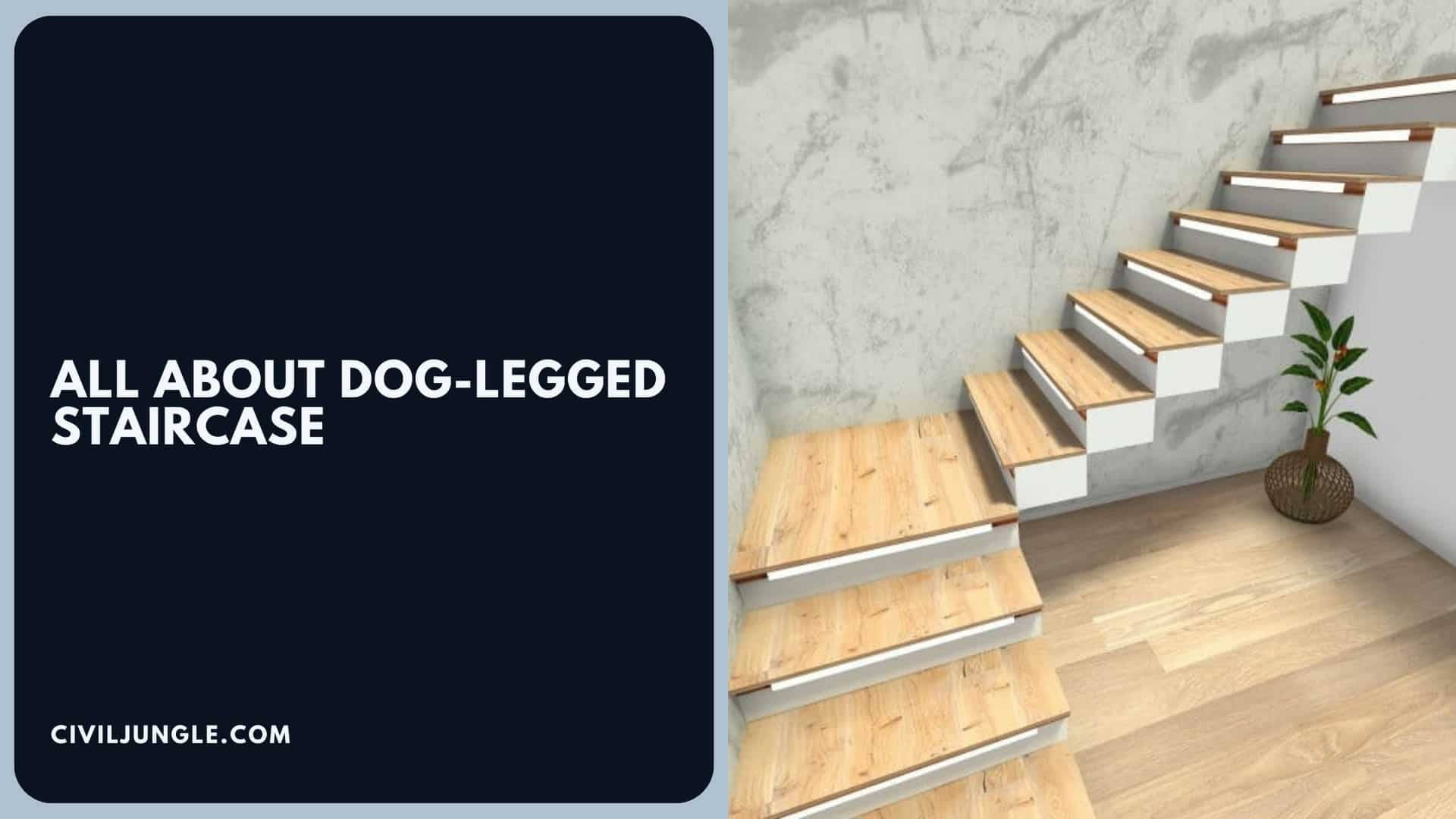

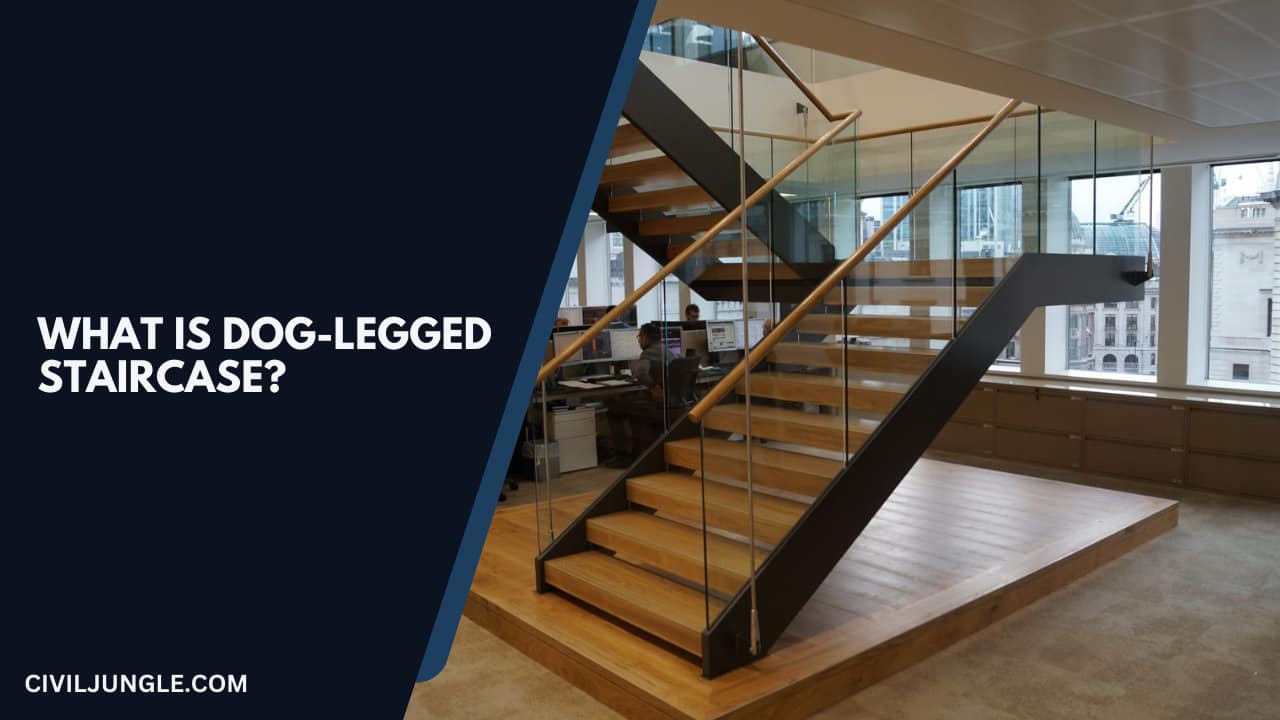
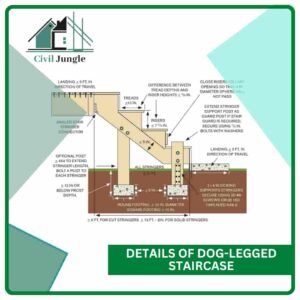
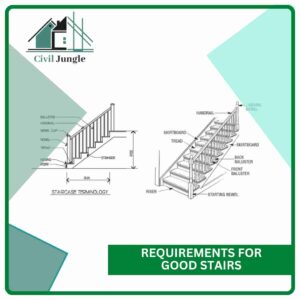
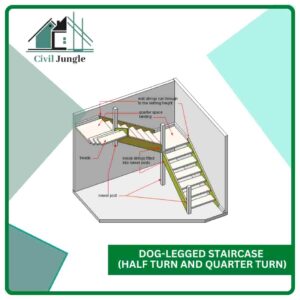
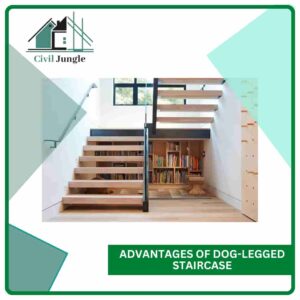

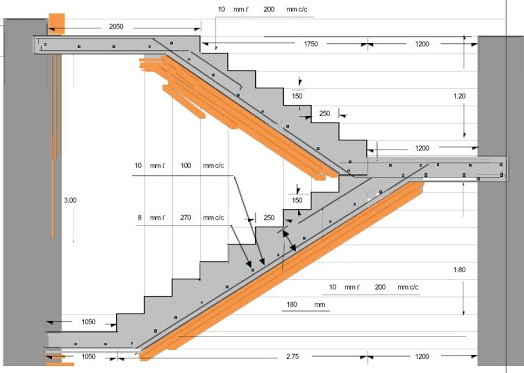

Great content! Super high-quality! Keep it up! 🙂